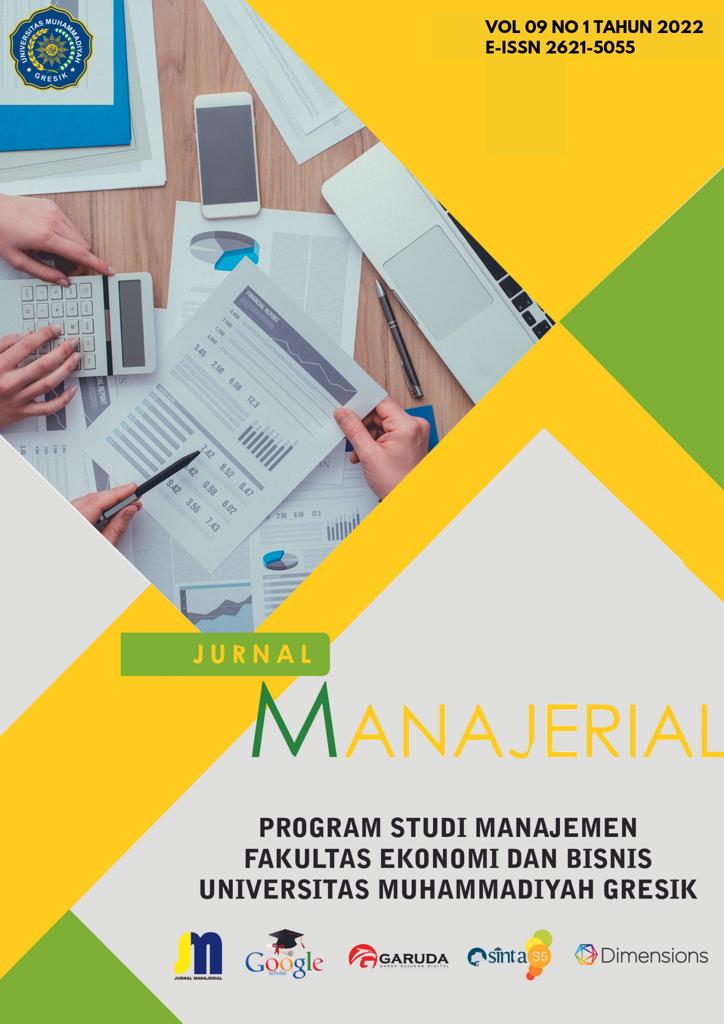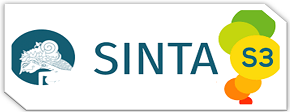Pengaruh Modal Inti Terhadap Profitabilitas Dan Kinerja Perbankan (Studi Pada Bank Syariah Di Indonesia)
DOI:
https://doi.org/10.30587/jurnalmanajerial.v9i01.3572Keywords:
Core, Capital, Profitability, PerformanceAbstract
Background - The growth potential of sharia banking business in Indonesia is increasing, so it is important to evaluate the performance of sharia banking. Aim - This study aims to examine the effect of core capital on the profitability and performance of Islamic Commercial Banks listed on the Indonesia Stock Exchange. This research is expected to provide input in financial knowledge, especially in the field of evaluating bank financial performance and the factors that influence it. Design/ Methodology/ Approach - The research object is 12 Islamic banks in Indonesia. The data is taken from the financial statements of each Islamic bank from 2015 to 2018. Hypothesis testing is carried out using a structural equation model with the WARP PLS program. Results and Discussion – The results show that core capital has a significant effect on profitability, as well as profitability has a significant effect on core capital. The results also show that core capital has no effect on performance and performance has no significant effect on core capital. The results showed that profitability had no effect on performance. Conclusion - The results of this study conclude that of the five hypotheses proposed only two are accepted, namely core capital has a significant effect on profitability, and vice versa profitability also has a significant effect on core capital. This study produces evidence that core capital has no significant effect on the performance of Islamic banks. Likewise, it turns out that profitability also does not significantly affect the performance of Islamic banks, but on the contrary, the performance of Islamic banks has no significant effect on profitability. Research implications - for the Islamic banking business, this research can provide input on how to measure the performance of Islamic banks through the profitability and core capital of Islamic banks. The object of research is 12 Islamic banks in. Limitations of the study - The research was carried out during the period when Islamic banks in Indonesia had not been merged
References
Abdillah W, H. (2015). Partial Least Square (PLS). Yogyakarta: Penerbit Andi.
Al-Tamimi KAM, S. O. (2013). Determinants of Capital Adequacy in Commercial Banks of Jordan an Empirical Study. International Journal of Academic Research in Economics and Management Science, 2(4).
Berger, A.N. , Herring, and S. (1995). The Role of Capital in Financial Institutions. Journal of Banking and Finance, 19.
Darmadji, Tjiptono, and H. M. F. (2001). Pasar modal di Indonesia: Pendekatan tanya jawab. Salembaempat.
Ernasari. (2017). Pengaruh Modal Inti,Manajemen Risiko dan Profitabilitas terhadap Kinerja. Universitas Brawijaya.
Fathurrahman. (2012). Pengaruh Tingkat Capital Adequacy ratio dan Loan to Deposit Ratio terhadap Profitabilitas pada PT Bank Sulselbar Makkasar. Universitas Hassanudin Makkasar.
Haryetti. (2012). Analisis Pengaruh Kinerja Keuangan Terhadap Harga Saham pada Perusahaan Perbankan. Jurnal Sosial Ekonomi Pembangunan, 3(7).
Ifham, A. (2010). Ekonomi Syariah. Jakarta: Gramedia Pustaka Utama.
Kurniawan AT , Sudarto, S. lestari. (2014). Analisis Faktor Faktor Yang Mempengaruhi Capital Adequacy Ratio. Purwokerto: Fakultas Ekonomi dan Bisnis Universitas Jendral Sudirman.
Lukman, D. (2003). Manajemen Perbankan (2nd ed.). Jakarta: Ghalia Indonesia.
Mardian, S. (2015). Persepsi Masyarakat terhadap Penerapan Sharia Compliance Pada Bank Syariah di Kecamatan Barabai, 2(1), 45–58.
Nazaf FL. (2014). Pengeruh Kualitas Aset Likuiditas dan Profitabilitas Terhadap Tingkat kecukupan Modal Perbankan. Padang: Fakultas Ekonomi Universitas Negeri Padang.
Salvatore, D. (2005). Ekonomi Manajerial dalam Perekonomian Global. Jakarta: Salemba Empat.
Soebiantoro, S. dan. (2007). Pengaruh Struktur Kepemilikan Saham,. Leverage, Faktor Interen dan Faktor Eksteren terhadap Nilai. Perusahan. Jurnal Manajemen Dan Kewirausahaan, 13(8).
Sugiyono. (2017). Metode Penelitian Kuantitatif, Kualitatif, dan R&D. Bandung: CV Alfabeta.
Sulistyastuti, D. R. (2005). No TitleAnalisis Pengaruh Earning perShare, Price earning Rasio dan Return on equity terhadap Harga Saham. Universitas Gunadarma.
Sussanto, I. (2007). Analisis Pengaruh Modal Inti,Rasio Kecukupan Modal,Rasio Pinjaman Deposito,Kredit Macet dan Suku Bunga Bersih Terhadap Profitabilitas bank. Majalah Ekonomi Dan Komputer, 15(3).
Van Horne, W. (2005). Prinsip-prinsip Manajemen. Keuangan (12th ed.). Jakarta: Salemba Empat.
Widoatmodjo. (2009). Pasar Modal Indonesia: Pengantar dan Studi Kasus. Ghalia Indonesia.
Zuk-Butkuviene. (2014). Capital Adequacy and Liquidity Risk Management. Ekonomika, 93(2).
Situs:
Indonesia Investment .(2020).
https://www.indonesia investments.com/id/budaya/agama/islam/item248
Otoritas Jasa Keuangan.(2016). Statistik perbankan syariah. Komposisi Pembiayaan yang Diberikan BPRS di Indonesia. https://www.ojk.go.id/id/kanal/syariah/data-dan-statistik/statistik-perbankan-syariah/Pages/Statistik-Perbankan-Syariah---Juni-2016.aspx






























 P-ISSN: 2354-8592 __ E-ISSN: 2621-5055
P-ISSN: 2354-8592 __ E-ISSN: 2621-5055 
